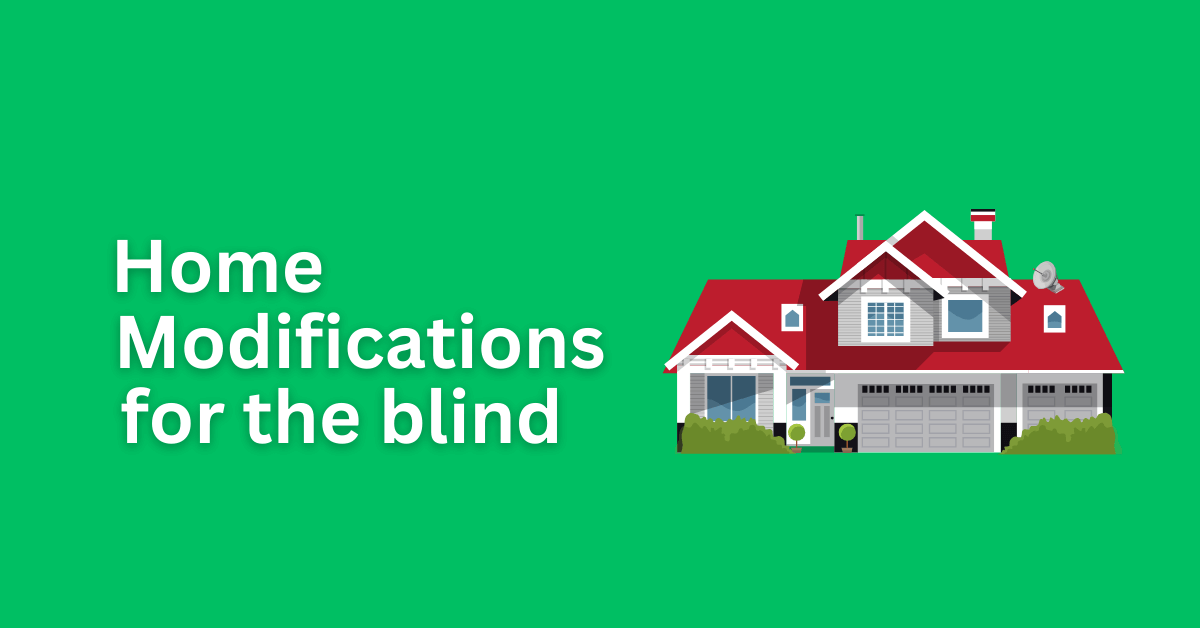As people age or experience visual impairment, it can be challenging to navigate their home environment safely. Fortunately, there are home adaptations and modifications available that can significantly enhance the safety and accessibility of living spaces. In this context, we have a list of 10 tips for making your home more accessible if you’re blind or have low eyesight.
Home modifications for blind or low vision
Provide adequate lighting.
People who are blind or have low vision need decent lighting. Ensure that each room has adequate illumination, paying particular attention to the spaces next to the door, the hallways connecting rooms, and the regions near the stairs.
Here are some tips for providing adequate lighting:
- Use bright but not harsh lighting: This can be achieved with the use of LED light bulbs, which are energy-efficient and last longer than traditional incandescent bulbs.
- Install task lighting: For example, you can install under-cabinet lighting in the kitchen to make it easier to see while cooking.
- Use adjustable lighting: Installing dimmer switches or smart bulbs that can be adjusted using a voice command or smartphone app can help individuals adjust the lighting to their needs.
Use contrasting colors
Using contrasting colors for different objects in the home can help individuals with low vision differentiate between them.
Here are some tips:
- Use black and white or contrasting colors for stairs: This can help individuals with low vision distinguish between the steps.
- Use light-colored work or dining tables with dark-colored chairs: This can make it easier for individuals to see where they need to sit.
- Use light switches with high-contrast colors: This can help individuals see the switches more easily.
Install smart home appliances
Smart home appliances that can be controlled using voice commands can be helpful for individuals with visual impairments.
Here are some smart devices to consider:
- Voice-activated thermostats: These can be controlled using a voice command, making it easier for individuals to adjust the temperature.
- Smart speakers: Devices like Amazon Echo or Google Home can be used to control other smart home devices using voice commands.
Install doorbells and intercoms:
Installing doorbells and intercoms can help individuals with visual impairments identify guests and communicate with them before answering the door.
Use non-slip surfaces
Here are some examples of non-slip surfaces that you can use in various areas of your home:
Bathroom:
- Textured rubber or silicone mats for the shower or bathtub
- Non-slip rugs or mats for the floor
- Adhesive strips or decals for the bathtub or shower floor
Kitchen:
- Rubber mats or textured vinyl flooring
- Non-slip rugs or mats for high-traffic areas, such as in front of the sink or stove
- Adhesive strips or decals for the area in front of the sink or stove
Stairs:
- Non-slip stair treads made of rubber or vinyl.
- Non-slip adhesive strips or tape applied to the stair treads.
- Carpeted stair treads with a non-slip backing.
Remember, it’s important to prioritize safety when making home modifications for visually impaired individuals.
Motion-sensing lighting
Installing motion-sensing lighting can help people who are blind or have vision problems go around their homes at night or in low light. This is a smart home feature that increases safety.
Here are some examples of motion-sensing lighting that you can use in various areas of your home:
- Outdoor lighting: Motion-sensing lighting can be installed on the exterior of homes, which turns on when it detects any movement. This can be useful for people who have difficulty navigating outdoor spaces in the dark.
- Staircase lighting: Motion-sensing lights can be installed on staircases, which helps people who are visually impaired or have mobility issues navigate safely.
- Closet lighting: Installing motion-sensing lights in closets can make it easier for people to find items without having to search for a light switch.
- Bathroom lighting: Motion-sensing lights can be installed in bathrooms, which can be helpful for people who need to use the bathroom during the night without turning on bright overhead lights.
- Entryway lighting: Motion-sensing lights installed in entryways can provide a welcoming environment for people coming into the home, as well as provide additional security by deterring potential intruders.
Maintain order
Keeping the home clean and clutter-free is important for individuals with visual impairments.
Here are some tips:
- Avoid furniture with sharp edges or corners: This can help prevent injuries if someone bumps into the furniture.
- Keep floors free of clutter: This can make it easier for individuals to navigate the home.
Install grab bars
Grab bars can be helpful for individuals with visual impairments who need extra support.
Here are some tips:
- Install grab bars near the toilet, shower, or bathtub: This can help individuals get in and out of these areas more easily.
Label food and medication containers
Label food and medication containers with braille labels or big print labels to make it easier for people who are blind or have limited vision to recognize them. This home modification for visually impaired individuals can increase their independence.
Home security system
Installing a home security system can reduce the risk of burglaries and other safety issues while also giving blind individuals and those who care for them a greater sense of security.
Conclusion
Making home modifications for the blind and visually impaired is crucial to improving their quality of life. By implementing the tips mentioned above, individuals can transform their homes into safer and more accessible spaces.
We encourage you to share your views and any unique and innovative ideas to modify homes in the comments.
Let’s spread this information by sharing this content because sharing is caring. Together, we can create a more inclusive and supportive community.

